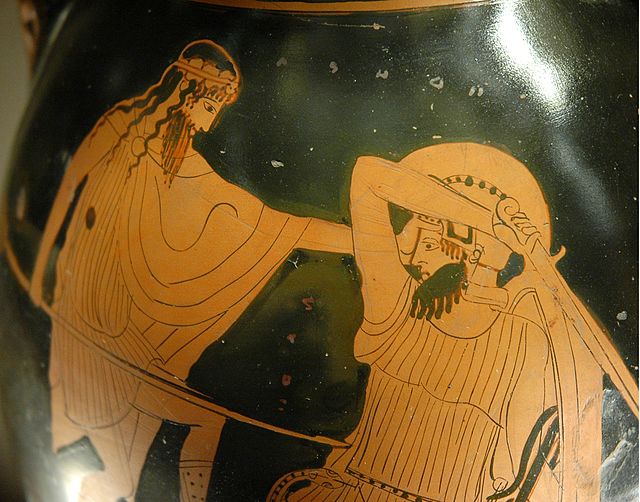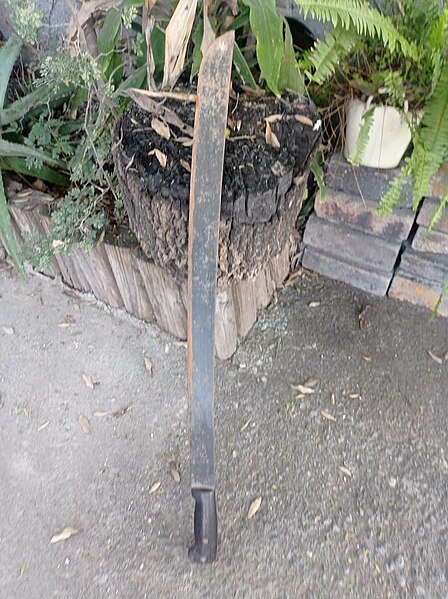The makhaira is a type of Ancient Greek bladed weapon and tool, generally a large knife or sword, similar in appearance to the modern day machete, with a single cutting edge.
Reconstructions of Mycenaean swords, the bottom one a makhaira-type sword.
The figure on the right is wielding a makhaira - indicated by its asymmetric guard and pommel and the curve of the cutting edge (uppermost in the image) of the blade whilst the back of the blade is flat. Attic figured pelike c. 460BC.
A man wielding a makhaira. Red figure amphora c. 460 BC
A machete is a broad blade used either as an agricultural implement similar to an axe, or in combat like a long-bladed knife. The blade is typically 30 to 66 centimetres long and usually under 3 millimetres thick. In the Spanish language, the word is possibly a diminutive form of the word macho, which was used to refer to sledgehammers. Alternatively, its origin may be machaera, the name given by the Greeks and Romans to the falcata. It is the origin of the English language equivalent term matchet, though this is rarely used. In much of the English-speaking Caribbean, such as Jamaica, Barbados, Guyana, Grenada, and Trinidad and Tobago, the term cutlass is used for these agricultural tools.
Machete/saw combo
Mexican artisan Agustín Cruz Tinoco using a machete to carve wood
Campos Hermanos Mexican machete with blade 75 centimeters long and 93 total.






